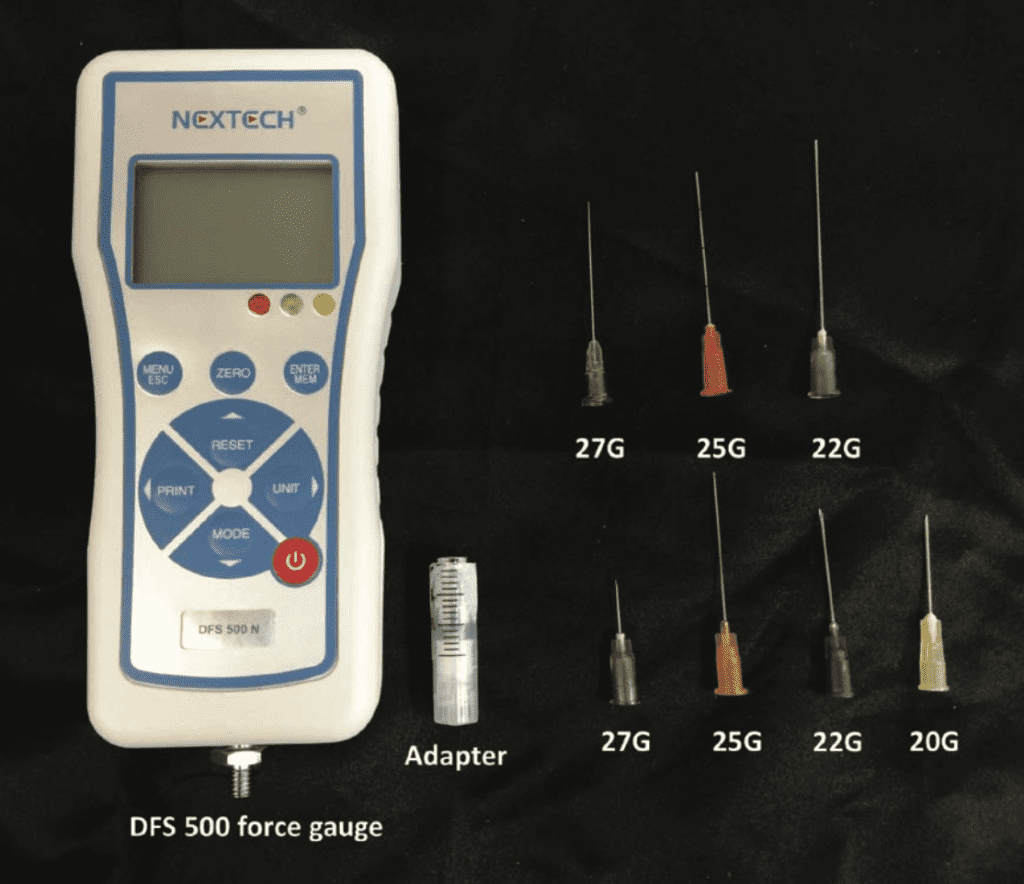It is commonly thought that the use of a cannula, instead of a needle, will automatically eradicate the risk of vessel penetration. However, anecdotal evidence amongst clinicians suggests this may not always be the case. Pavicic et al. (2019) have now shown clinical data that proves this.
Pavicic’s study looked specifically at the superficial temporal and facial arteries. Needles ranging from 20- to 27-gauge, as well as cannulas from 22- to 25-gauge were tested. These vessels were contacted multiple times with an increasing amount of force until penetration was achieved.

It must be stated that the same force application with a smaller needle will result in increasing pressure on the surface it is contacting. For example, if someone places a 1kg dumbbell in your hand, you would simply support it. If, however, a needle was directed at your hand with 1kg of weight behind it, it would clearly penetrate deep into your tissues. This is a verbal representation of the equation for pressure:
Pressure = force / area.
With this in mind, it should come as no surprise that the smaller gauge needles required less force to penetrate a vessel. Mathematically, this is because the ‘area’ part of the equation is smaller, so the ‘force’ part of the equation can be smaller too in order to make the same fraction, or, ‘pressure’. This is why pressure is given in a unit that represents force divided by area. For example, ‘PSI’ is pounds per square inch. When we fill our car tyres up with air at the petrol station, the units on the screen are often quoted in PSI.
The interesting part of the study comes when 27-gauge instruments are used. The bigger cannulas (22- and 25-) did not penetrate the vessels when used with the same force that allowed the equivalent needle to do so. But, when it came to 27-gauge cannulas, there was no difference in the amount of force needed to penetrate a vessel (0.7-0.8N on average).
The consequences of these findings are that 22- and 25- gauge cannulas are indeeded safer than needles of the same size in terms of penetration risk relative to force. However, 27-gauge ones are no safer than 27-gauge needles.
References:
1. Pavicic et al. Arterial Wall Penetration Forces in Needles versus Cannulas. J Plastic and Reconstructive Surg. 2019;143: 504e-512e.